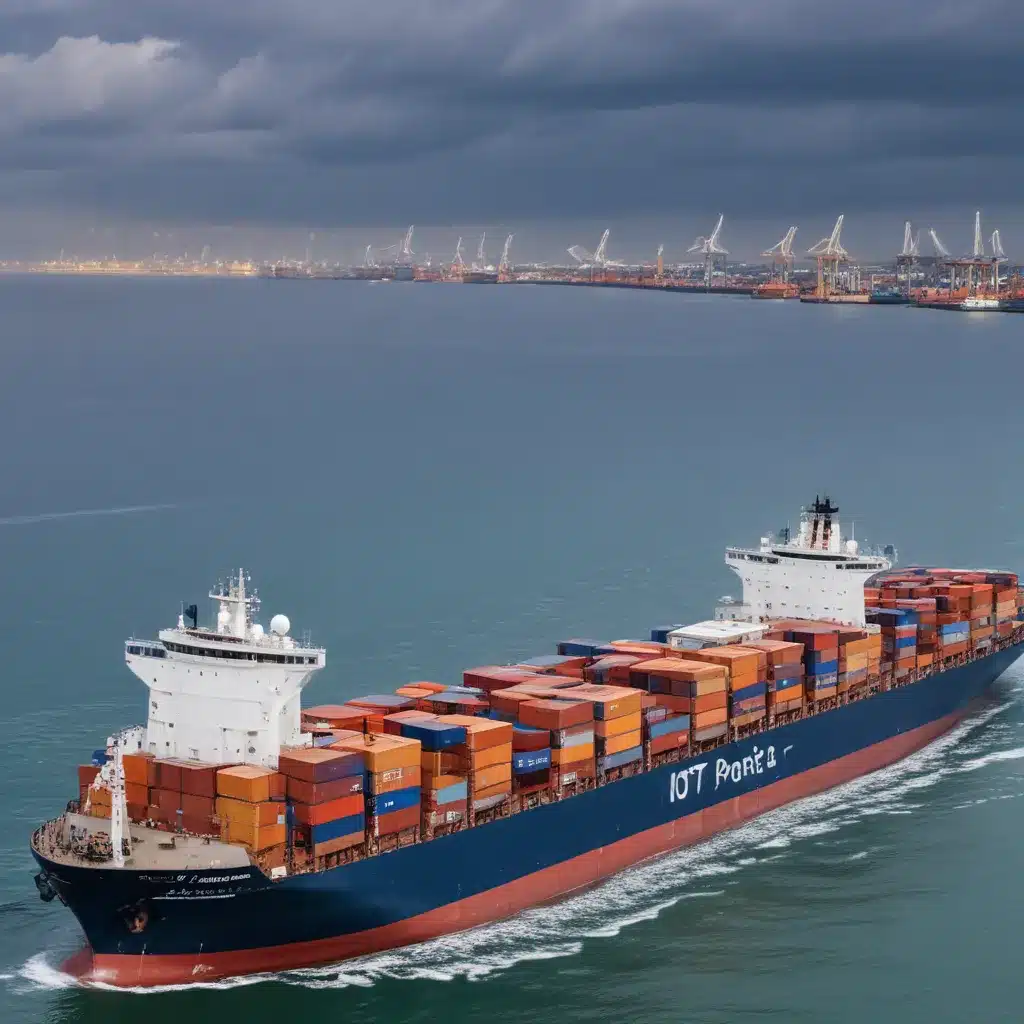Ahoy there, fellow tech enthusiasts! Are you ready to dive into the fascinating world of IoT (Internet of Things) and how it’s transforming the high seas and bustling ports? Buckle up, because we’re about to embark on an adventure that will make you wish you had a pair of sea legs!
The Salty Saga of Smart Ports
You know, back in the day, ports were like a game of Tetris, with cranes and containers stacked haphazardly, and workers scrambling around like ants. But now, with the rise of IoT, these maritime hubs are getting a major upgrade. Imagine a port where everything is connected, from the ships gliding in to the trucks zipping out – it’s like a well-oiled machine, only with a lot more salt in the air!
Take the Port of Rotterdam, for example. They’ve been making waves with their smart port initiatives, using IoT to streamline operations and keep everything shipshape [1]. Sensors are keeping a watchful eye on the cranes, containers, and even the weather, ensuring that every process runs like a well-oiled machine. And let’s not forget about the automated guided vehicles (AGVs) – they’re practically dancing around the port, moving cargo without so much as a human in sight!
But it’s not just about the fancy tech, you know. Ports are all about teamwork, and IoT is helping to bring everyone together, from the shipping companies to the cargo handlers. With real-time data sharing and communication, it’s like having a crystal ball that can predict the future of port operations. [2] Just imagine the chaos that can be averted when you know exactly when a ship is arriving, how much cargo it’s carrying, and where it needs to go. It’s a captain’s dream come true!
Keeping Ships Shipshape with IoT
Now, let’s talk about the ships themselves. These floating behemoths are the lifeblood of global trade, and they’re getting a serious tech upgrade too. Imagine a ship where every system is connected, from the engine room to the bridge. With IoT sensors monitoring everything from fuel consumption to engine performance, captains can keep a close eye on their vessels, even when they’re miles away from land. [3]
But it’s not just about keeping the ship running smoothly – IoT is also helping to improve safety and security. Imagine a scenario where a ship experiences a mechanical failure or a security breach. With IoT, the crew can instantly alert the relevant authorities, who can then spring into action to provide assistance or take appropriate measures. It’s like having a digital first mate that’s always on the lookout!
And let’s not forget about the cargo itself. With IoT-enabled tracking devices, you can follow your shipment from the moment it’s loaded onto the ship to the instant it’s unloaded at the port. No more wondering where your precious goods are – it’s like having a personal GPS for your cargo!
Sailing into the Future with IoT
Ahoy, me hearties! As you can see, IoT is transforming the maritime industry in ways we never thought possible. From smart ports to connected ships, the future of the high seas is looking brighter than ever. So, if you’re a tech-savvy port operator or a seafaring captain, it’s time to set sail and embrace the power of IoT. Who knows, you might just end up with a treasure trove of data and efficiency that would make any pirate green with envy!
References
[1] Cisco. (n.d.). Ports and Terminals. Retrieved from https://www.cisco.com/c/en/us/solutions/internet-of-things/ports-terminals.html
[2] Ericsson. (2022, August). IoT Condition Monitoring for Smart Ports. Retrieved from https://www.ericsson.com/en/blog/2022/8/iot-condition-monitoring-smart-ports
[3] Intel. (n.d.). Smart Ports. Retrieved from https://www.intel.com/content/www/us/en/transportation/smart-ports.html













